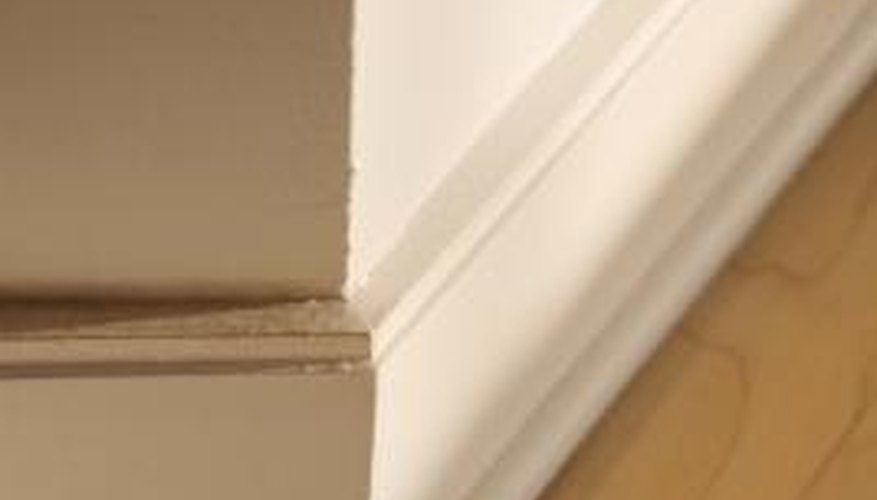Homeowners often find small worms on their walls and baseboards. These worms are most likely the larval form of pests such as house flies or Indian meal moths. These common indoor pests lay their eggs along baseboards and in protected areas. After hatching, the larva is often seen crawling around indoors until it pupates into its adult form.
Types
Indian meal moths are often seen flying around homes during the early winter months. Adult moths are 3/8 inches in length and brown or grey in colour. Indian meal moths lay their eggs in or near dried bits of food. After hatching, the larvae are white coloured worms that may be seen crawling along walls or on the ceiling.
- Indian meal moths are often seen flying around homes during the early winter months.
- After hatching, the larvae are white coloured worms that may be seen crawling along walls or on the ceiling.
House flies are common indoor pests that lay eggs indoors and outdoors. After hatching, the larvae are small, white maggots that may be seen along baseboards and baseboard heaters and around cracks in floors. House fly larvae also pupate underneath carpet.
Effects
Indian meal moth larvae often migrate from their food source in search of a place to make their cocoons. Most meal moth larvae make their cocoons in the cracks and crevices of kitchen cabinets and baseboards. Indian meal moths reach maturity within two months from hatching.
- Indian meal moth larvae often migrate from their food source in search of a place to make their cocoons.
House flies often lay their eggs underneath stoves, along cracks in baseboards and in baseboard heaters. Loose floor tiles and drains are also favourite places for house flies to lay their eggs. After hatching, the maggots may wander around in search of food. House flies are considered filth flies and can transmit dangerous diseases to humans through their contact with food.
Cultural Control
Placing all stored food items such as cereal, grain and dried fruits in containers with tight fitting lids will help reduce infestations of Indian meal moths. Discard any stored foods that appear to be infested with insects. Indian meal moths spin a webbing over infested food, which can have a dusty appearance. Vacuum shelves where food is stored on a regular basis to remove eggs before they hatch into meal moth larvae.
- Placing all stored food items such as cereal, grain and dried fruits in containers with tight fitting lids will help reduce infestations of Indian meal moths.
- Vacuum shelves where food is stored on a regular basis to remove eggs before they hatch into meal moth larvae.
House flies can be controlled, but it is often difficult. Finding the source of the breeding site is key to reducing infestations of house flies and their larvae. Swatting or spraying adult flies with aerosol sprays can help reduce infestations. Find and eliminate any sites that appear to be harbouring house fly eggs.
Chemical Control
Indian meal moths and their larvae are seldom so numerous that they require chemical control methods. Sweep or vacuum up larvae and throw the bag away outside to prevent reinfestation.
- Indian meal moths and their larvae are seldom so numerous that they require chemical control methods.
House flies may be eliminated with aerosol sprays. Strong pesticides are rarely used in house fly control. Light traps can help reduce house fly infestations. Eliminating breeding sites will reduce the amount of fly larvae you see crawling along your baseboards, walls and ceilings.
